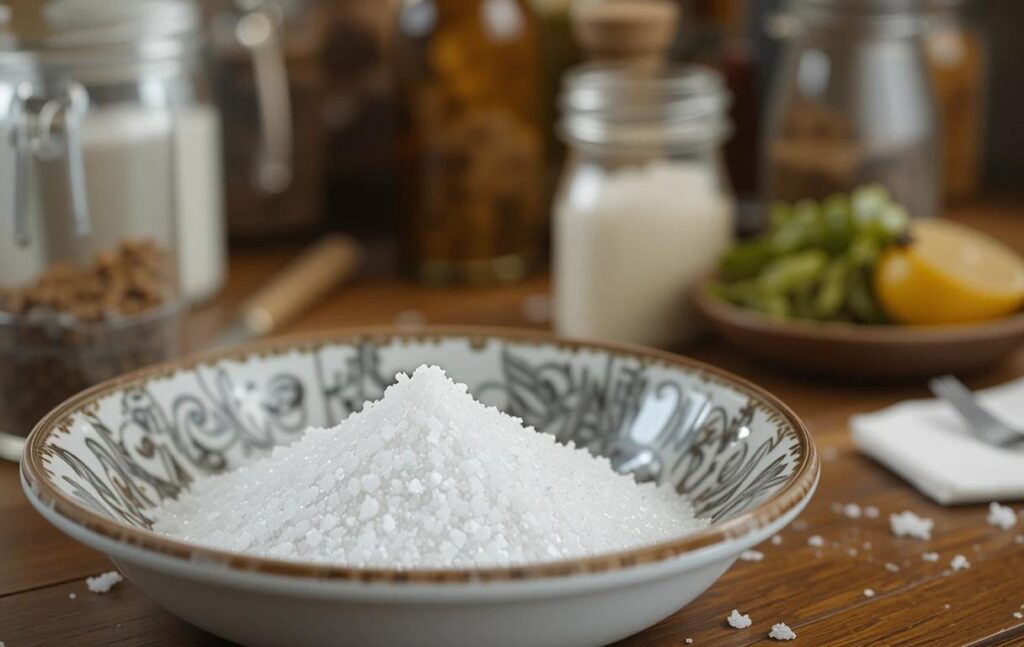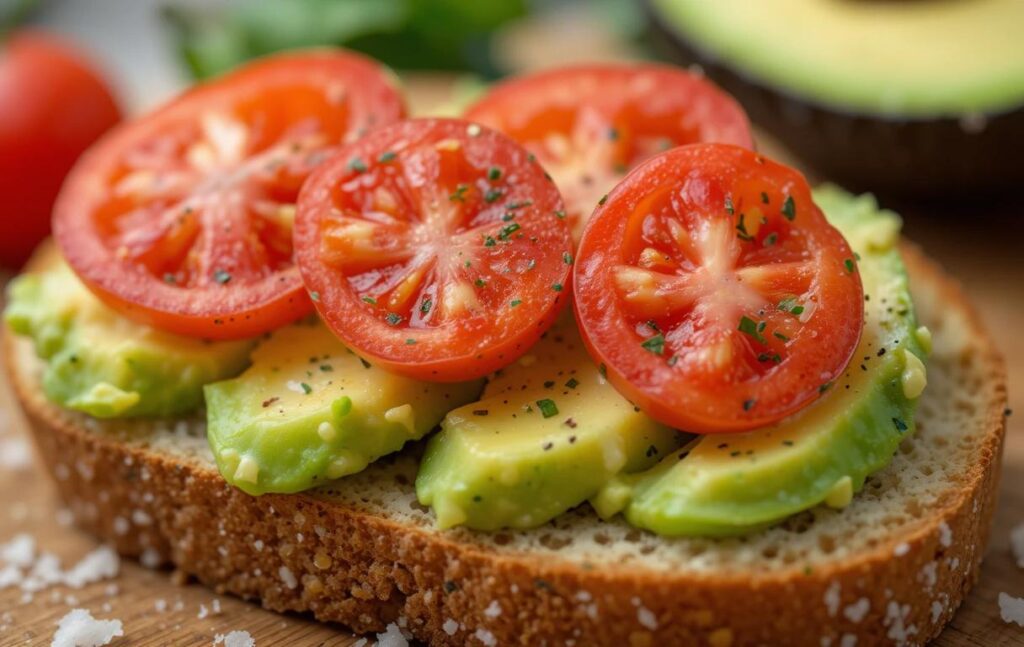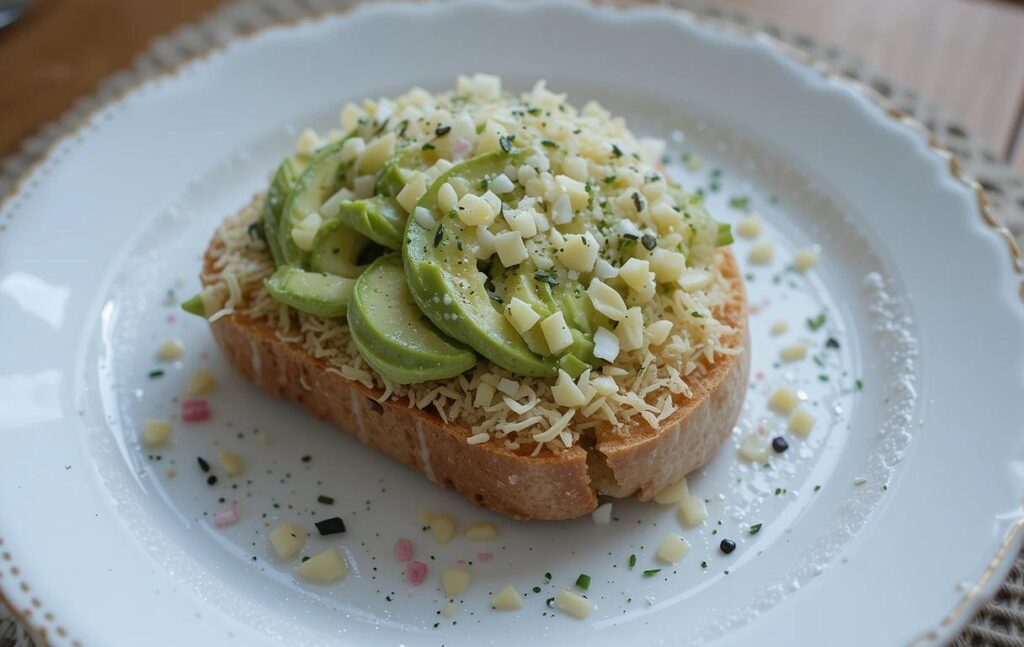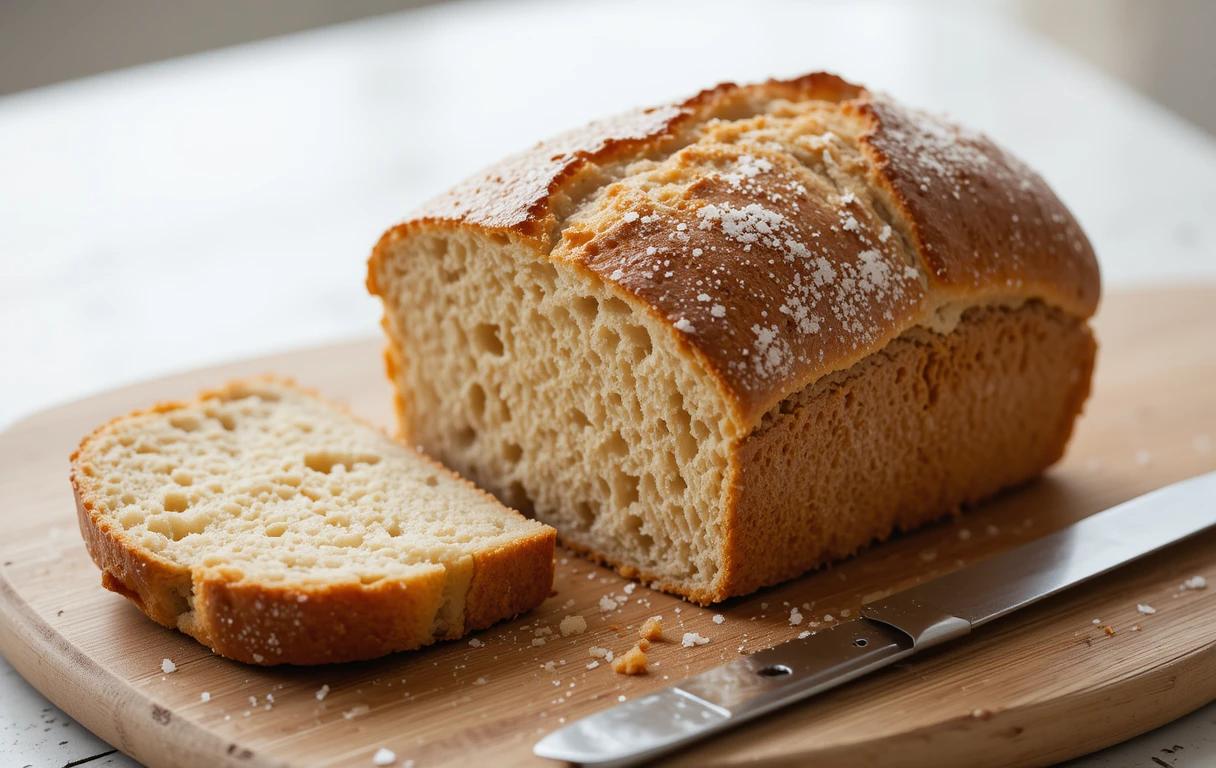Is Salt-Rising Bread High in Sodium? Learn the Truth!
Salt-rising bread is a unique and traditional type of bread that has been cherished for its distinct flavor and historical significance. But as the name suggests, many wonder: Is salt-rising bread high in sodium? Understanding the nutritional profile of this bread, particularly its sodium content, is crucial for those monitoring their dietary sodium intake. This article explores the history, ingredients, health considerations, and how to enjoy this flavorful bread responsibly.
What Is Salt-Rising Bread?
Salt-rising bread is a type of bread known for its rich, cheesy flavor and dense texture. It originated in the Appalachian region of the United States during the 19th century, when commercial yeast was unavailable. Home bakers relied on natural fermentation from a mixture of milk or water and cornmeal to create the leavening agent for the bread.
Unlike other breads that use traditional yeast, salt-rising bread uses this naturally fermented mixture to rise, giving it a unique taste and texture that sets it apart. Its name often confuses people, as it doesn’t necessarily refer to the addition of salt but rather to the warm, salt-lined environment used to incubate the starter.
Ingredients of Salt-Rising Bread
Salt-rising bread typically requires a few simple ingredients:
- Flour: Usually all-purpose or bread flour.
- Milk or Water: Essential for creating the starter and forming the dough.
- Cornmeal: The primary ingredient in the natural leavening mixture.
- Baking Soda: Sometimes added for an extra leavening boost.
- Salt: Used for flavor enhancement.
While salt is an ingredient, the amount added is generally minimal and used for taste rather than as a leavening agent. This is important to note when considering its sodium content.
How Salt-Rising Bread Is Made
The preparation process of salt-rising bread is labor-intensive and requires precise temperature control. The key steps include:
- Creating the Starter: A mixture of cornmeal, milk, or water is kept warm for 12–18 hours to encourage fermentation.
- Mixing the Dough: The fermented starter is combined with flour, a small amount of salt, and sometimes baking soda to form the dough.
- Proofing and Baking: The dough is left to rise in a warm environment before being baked to golden perfection.
This natural fermentation method contributes to the bread’s unique aroma and flavor, but it does not inherently increase its sodium content.
Sodium Content in Salt-Rising Bread

Salt-rising bread has intrigued many with its name and unique preparation process. However, when it comes to sodium content, the actual levels depend on how it’s prepared. Let’s explore this aspect in more detail.
How Much Sodium Does Salt-Rising Bread Contain?
The sodium content of salt-rising bread varies based on the recipe used. A typical slice of salt-rising bread contains around 120–150 milligrams of sodium, which is comparable to many other types of bread. However, this amount can change depending on the specific ingredients and whether additional salt is used in the recipe.
- Standard Recipes: Often use about 1–2 teaspoons of salt for an entire loaf, which is then distributed across several servings.
- Commercial Varieties: Pre-packaged salt-rising bread may have higher sodium levels due to added preservatives and flavor enhancers. Always check the nutritional label for accurate information.
Key Point: While salt is included for flavor, its quantity is not excessive and doesn’t make this bread inherently “high” in sodium.
Comparing to Other Breads
To understand if salt-rising bread is high in sodium, it’s helpful to compare it to other popular bread types:
| Bread Type | Sodium per Slice (Approx.) |
|---|---|
| White Bread | 150–200 mg |
| Whole Wheat Bread | 130–180 mg |
| Salt-Rising Bread | 120–150 mg |
| Low-Sodium Bread | 5–30 mg |
| Sourdough Bread | 140–180 mg |
Salt-rising bread falls within the typical range for most standard breads. It is not as low as specialty low-sodium breads, but it is not significantly higher than sourdough or whole wheat bread.
Does “Salt” in the Name Indicate High Sodium?
A common misconception about salt-rising bread is that its name implies a high salt content. In reality:
- The term “salt-rising” refers to the warm, salt-insulated environment originally used to ferment the bread’s starter.
- The starter itself does not require salt, and any salt in the dough is for flavor enhancement, not as a preservative or rising agent.
This historical misinterpretation has led many to wrongly assume that salt-rising bread is unsuitable for low-sodium diets.
Health Considerations of Sodium in Diet
Sodium is an essential mineral for the body, playing a key role in regulating fluid balance, nerve function, and muscle contraction. However, excessive sodium intake is a common health concern, linked to various chronic conditions. When considering the sodium content in salt-rising bread, it’s important to understand how it fits into your overall diet and health goals.
Sodium Recommendations by Health Organizations
Leading health organizations provide guidelines to help individuals manage their sodium intake:
- World Health Organization (WHO): Recommends limiting sodium intake to less than 2,000 milligrams per day.
- American Heart Association (AHA): Suggests an ideal daily limit of 1,500 milligrams for most adults, especially those with high blood pressure or heart disease.
- U.S. Dietary Guidelines: Sets the general limit at 2,300 milligrams per day for healthy adults.
One or two slices of salt-rising bread, averaging 120–150 milligrams of sodium per slice, contribute a small fraction of these daily limits, making it manageable for most people when consumed in moderation.
Risks of Excessive Sodium Consumption
Regularly exceeding recommended sodium levels can lead to serious health complications, including:
- Hypertension (High Blood Pressure): Excess sodium causes the body to retain water, increasing blood pressure.
- Heart Disease: Elevated blood pressure strains the heart, increasing the risk of heart attacks and strokes.
- Kidney Damage: High sodium intake forces the kidneys to work harder, potentially leading to kidney disease over time.
- Osteoporosis: Excess sodium can contribute to calcium loss in the bones, increasing the risk of osteoporosis.
Salt-rising bread, when eaten as part of a balanced diet, is unlikely to contribute significantly to these risks. However, individuals on low-sodium diets or with health concerns should monitor their portion sizes.
Balancing Sodium in Your Diet
Even if you enjoy salt-rising bread, you can still maintain a healthy sodium balance by adopting the following strategies:
- Control Other Sources of Sodium: Limit processed and packaged foods, which often contain hidden sodium.
- Increase Potassium-Rich Foods: Fruits and vegetables like bananas, oranges, and spinach help counteract sodium’s effects.
- Stay Hydrated: Drinking water supports kidney function, aiding in sodium regulation.
Salt-rising bread, like other breads, should be consumed mindfully but doesn’t have to be excluded from a health-conscious diet.
Is Salt-Rising Bread Suitable for a Low-Sodium Diet?
Salt-rising bread can fit into a low-sodium diet if consumed in moderation and paired with low-sodium meals. For those requiring stricter sodium limits, homemade recipes can adjust the salt content without compromising its flavor and texture. Additionally, it pairs well with fresh, unsalted toppings like avocado or vegetables.
Benefits of Salt-Rising Bread

Salt-rising bread offers more than just a unique flavor. Its history, preparation process, and nutritional profile make it a beloved choice for many bread enthusiasts. Despite concerns about sodium, this bread has several notable benefits that appeal to a wide range of dietary preferences and culinary traditions.
Unique Flavor Profile
One of the most celebrated aspects of salt-rising bread is its distinctive taste. Unlike conventional yeast breads, it has a rich, cheesy aroma and flavor, even though it contains no cheese. This unique profile comes from the natural fermentation of the starter.
- Taste Appeal: The bold flavor pairs exceptionally well with a variety of sweet or savory toppings, making it versatile for breakfast, lunch, or snacks.
- Texture: Salt-rising bread is dense yet soft, with a fine crumb that holds up well to spreads like butter, jam, or nut butter.
Why It Matters: For those who appreciate artisanal or heritage breads, salt-rising bread offers a sensory experience unlike any other.
Nutritional Value
Beyond sodium, salt-rising bread has other nutritional qualities that make it a balanced choice for many:
- Moderate Calorie Content: A single slice typically contains 80–100 calories, depending on the recipe.
- Minimal Fat: It’s naturally low in fat, especially when made with simple, traditional ingredients.
- Source of Carbohydrates: Provides a steady source of energy, making it suitable for active individuals or as part of a balanced meal.
Tip: Pair salt-rising bread with protein-rich or fiber-rich foods to create a nutritionally complete dish.
Digestive Benefits
The fermentation process involved in making salt-rising bread offers potential digestive advantages:
- Natural Fermentation: The use of a naturally fermented starter can make the bread easier to digest for some people.
- Probiotic Potential: Although the baking process eliminates live cultures, the fermentation still contributes to the breakdown of certain compounds, which may aid digestion.
For Sensitive Stomachs: Some individuals find that the fermentation process reduces compounds like phytic acid, which can inhibit nutrient absorption in other breads.
A Heritage Bread with Historical Value
Salt-rising bread is a piece of culinary history, representing the resourcefulness of early American bakers. By choosing salt-rising bread, you’re also supporting the preservation of a tradition that dates back centuries.
- Connection to Tradition: Enjoying or baking salt-rising bread can foster a sense of connection to its Appalachian roots.
- Artisanal Appeal: Many bakers appreciate the skill and patience required to master this bread, making it a rewarding baking challenge.
Gluten Content in Salt-Rising Bread
For those with dietary restrictions, it’s important to note that salt-rising bread is not gluten-free. The flour used in traditional recipes contains gluten, which contributes to its structure and texture.
- For Gluten-Free Alternatives: Consider substituting with gluten-free flours and modifying the starter to maintain the bread’s signature flavor.
How to Enjoy Salt-Rising Bread Responsibly

Salt-rising bread can be a delicious addition to your diet when consumed in moderation. By making mindful choices about portions, pairings, and preparation, you can enjoy its unique flavor without exceeding your dietary sodium limits. Let’s explore some practical tips and strategies.
Mindful Portion Sizes
As with any bread, portion control is key to managing sodium intake. A standard slice of salt-rising bread typically contains around 120–150 milligrams of sodium. By limiting your intake to one or two slices per meal, you can enjoy its flavor while keeping your sodium levels in check.
Tip: Pair smaller portions of salt-rising bread with nutrient-rich foods to create a satisfying, balanced meal.
Low-Sodium Alternatives
If you’re on a low-sodium diet or looking to reduce your sodium intake, consider these options:
- Homemade Salt-Rising Bread: Adjust the recipe to include less salt or use a salt substitute that suits your dietary needs.
- Specialty Low-Sodium Breads: Some bakeries or online retailers offer low-sodium versions of salt-rising bread.
- DIY Baking: Experiment with using herbs or spices for flavor instead of adding salt to the dough.
For Bakers: Reducing salt slightly may alter the taste, but the fermentation process will still create the bread’s signature cheesy flavor.
Pairing Salt-Rising Bread with Healthy Toppings
Choosing the right toppings can enhance the nutritional value of your meal while balancing sodium intake. Here are some healthy topping ideas:
- Avocado: Creamy and rich in potassium, avocado helps counteract sodium’s effects.
- Fresh Vegetables: Tomato slices, cucumber, or spinach add flavor and crunch without extra sodium.
- Nut Butters: Peanut or almond butter provides protein and healthy fats for a satisfying meal.
- Unsalted Butter or Olive Oil: A light spread of unsalted butter or a drizzle of olive oil keeps it simple and delicious.
Avoid: High-sodium toppings like processed cheese, deli meats, or salted butter to prevent sodium overload.
Balancing Your Overall Sodium Intake
Incorporating salt-rising bread into your diet doesn’t mean you have to exceed your sodium limits. To create balance:
- Monitor Sodium in Other Meals: If you’re having salt-rising bread for breakfast, opt for low-sodium foods like fresh fruits or yogurt for lunch and dinner.
- Stay Hydrated: Drinking plenty of water helps your body manage sodium levels.
- Increase Potassium Intake: Include potassium-rich foods like bananas, sweet potatoes, or beans in your meals to help maintain proper sodium balance.
Making Salt-Rising Bread at Home
For those who enjoy baking, making salt-rising bread at home allows you to control every ingredient. Follow these steps for a lower-sodium version:
- Use a standard salt-rising bread recipe but reduce the amount of salt by 25–50%.
- Consider using unsalted butter or low-sodium alternatives for flavor adjustments.
- Experiment with adding herbs like rosemary or thyme to enhance flavor naturally.
Baking at home ensures you know exactly what’s in your bread, making it easier to manage sodium intake.
Incorporating It into a Balanced Diet
Salt-rising bread is best enjoyed as part of a balanced diet. Combine it with lean proteins, fresh produce, and whole grains to ensure you’re meeting your nutritional needs. Whether it’s part of a hearty breakfast, a lunchtime sandwich, or a light snack, it can complement a variety of meals.
Frequently Asked Questions (FAQs)
To address common concerns about salt-rising bread and its sodium content, here are answers to frequently asked questions. These insights will help you make informed choices about incorporating this unique bread into your diet.
Is Salt-Rising Bread High in Sodium?
Salt-rising bread is not inherently high in sodium. A single slice typically contains about 120–150 milligrams of sodium, which is comparable to many other types of bread. While it’s not as low in sodium as specialty low-sodium breads, it can be enjoyed in moderation as part of a balanced diet.
Can Salt-Rising Bread Be Made Without Salt?
Yes, salt-rising bread can be made with reduced or no added salt, especially in homemade recipes. Although this may slightly alter the flavor, the fermentation process still produces the bread’s characteristic cheesy taste. To enhance flavor, consider using herbs, spices, or a sprinkle of salt-free seasoning.
How Does Salt-Rising Bread Get Its Name?
The name “salt-rising bread” originates from the traditional method of preparing the starter. Early bakers often incubated the starter in a warm, salt-insulated environment to maintain a consistent temperature for fermentation. Despite its name, the bread doesn’t rely heavily on salt for leavening or flavor.
How Does Salt-Rising Bread Compare to Other Breads?
Salt-rising bread has a sodium content comparable to most standard breads, such as white or whole wheat bread. Here’s a quick comparison:
| Bread Type | Sodium per Slice (Approx.) |
|---|---|
| Salt-Rising Bread | 120–150 mg |
| White Bread | 150–200 mg |
| Whole Wheat Bread | 130–180 mg |
| Low-Sodium Bread | 5–30 mg |
Salt-rising bread’s unique fermentation process and flavor make it a distinctive choice among bread varieties.
Is Salt-Rising Bread Gluten-Free?
No, traditional salt-rising bread is not gluten-free. It’s made with wheat-based flours that contain gluten, which contributes to its structure and texture. Gluten-free versions can be made by substituting wheat flour with gluten-free alternatives, though the texture and flavor may differ from the original.
What Are the Best Toppings for Salt-Rising Bread?
Salt-rising bread pairs well with a variety of toppings, such as:
- Savory: Avocado, tomato slices, hummus, or unsalted butter.
- Sweet: Jam, honey, or fresh fruit slices. For a healthy option, choose toppings low in sodium and rich in nutrients to complement the bread’s natural flavor.
Does Salt-Rising Bread Contain Added Preservatives?
Homemade salt-rising bread typically doesn’t contain preservatives, making it a natural and wholesome choice. Commercially produced varieties, however, may include preservatives or additional sodium to extend shelf life. Always check the nutritional label for details.
Conclusion
Salt-rising bread is a flavorful and historically significant type of bread that continues to delight enthusiasts with its unique taste and texture. While the name might suggest otherwise, salt-rising bread is not inherently high in sodium. A single slice contains about 120–150 milligrams of sodium, making it comparable to most standard breads. By consuming it in moderation and pairing it with nutrient-rich, low-sodium foods, you can enjoy its distinctive flavor without exceeding your sodium intake limits.
For those on a low-sodium diet, homemade versions of salt-rising bread allow for adjustments to the recipe, reducing the salt content while preserving its signature cheesy taste. Whether you’re savoring it as part of a balanced breakfast or using it as the foundation for a hearty sandwich, salt-rising bread offers a versatile and satisfying option for bread lovers.
By understanding its sodium content, health considerations, and nutritional benefits, you can make informed decisions about including salt-rising bread in your diet. Enjoy this delicious bread responsibly, and let its rich history and unique flavor become a part of your culinary repertoire.
Best Bread Machine Bread
Related Recipes
- “Tuna Tomato Sauce Pasta Recipe“: A tomato-based recipe showcasing another way to use tomatoes.
- “Baked Chicken Fettuccine Alfredo with Broccoli“: Another comforting dish that can be complemented with tomato-based sauces.
Ingredient-Focused Content
- “Lions Mane Mushroom Recipe“: Suggest using a tomato gravy as a flavorful addition for plant-based dishes.
Cooking Techniques and Enhancements
- “Mango Habanero Salsa“: Explore complementary uses of sauces and gravies for flavor diversity.
Storage and Reuse Tips
- “Sous Vide Recipes“: Recommend tomato gravy as a sauce for sous vide-cooked meats or vegetables.
- “Ocean Spray Cranberry Sauce Recipe“: Guide readers on making and storing sauces, including tomato gravy.

